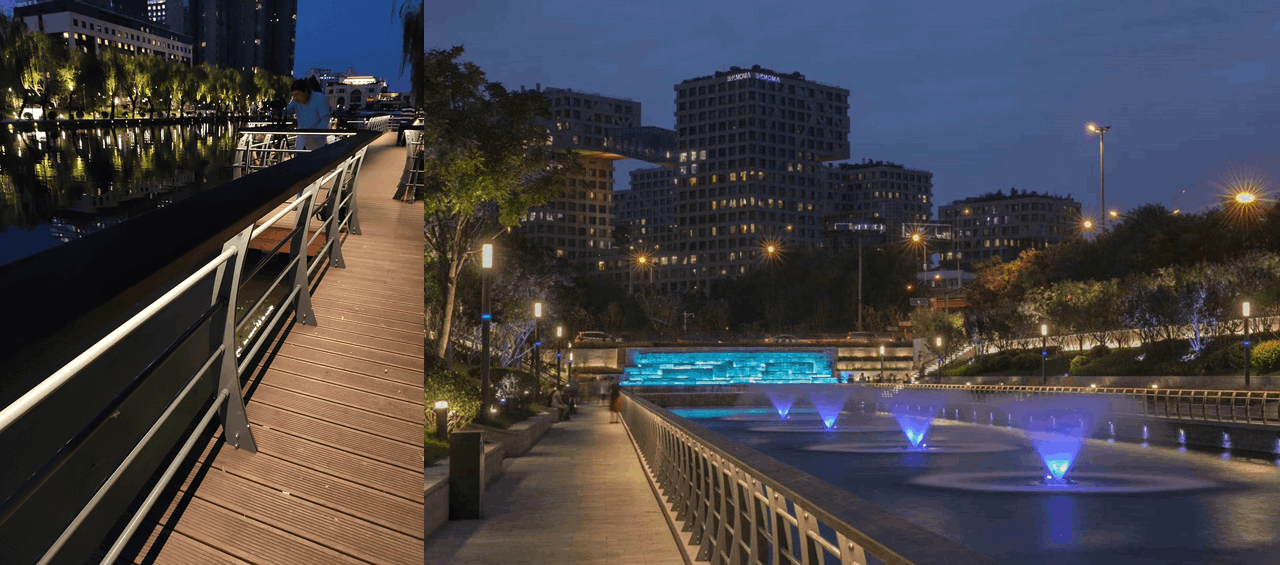
Emblematic Perspectives and Inviting Athmosphere
2020 - Beijing, China.
The Liangma River is one of the key urban elements of defining the heart of Beijing West, (the Chaoyang district). It spans from the 2nd Ring Road until the Chaoyang Park reaching the 4th Ring Road. This crosses waterway crosses a number of different parts of the Chaoyang district with different characteristics, functions and populations. (the quiet Dongzhimen / MOMA area, The Urban waterfront of the 3rd Ring Road, The open and busy Luftansa area, The recreative area of Solana…) In that way it is an important cultural space reflecting the life of the city and of its inhabitants. The Liangma River bed needed to be cleaned and remodeled for sanitary and engineering reasons. But the Beijing Municipality recognized the potential of this city waterway to become a thriving public space servicing the local population and as well resonating further as an emblematic recognizable and enjoyable place expressing the qualities of the capital city. They commissioned a redesign of the river’s banks and landscape to AECOM. SGG and Liquidesign were appointed to support with a full fledge lighting design of this 5 KM long and 800,000 square meters waterfront landscape, I was the Lead designer of this project.

Emblematic Perspectives and Inviting Athmosphere
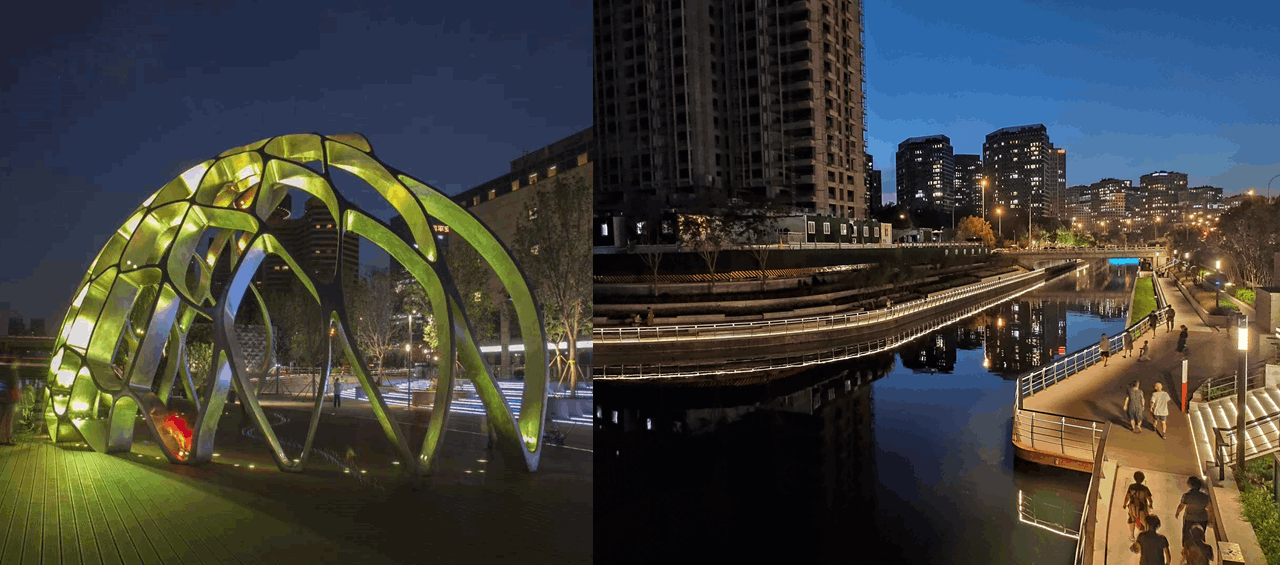
Landmark artwork and dynamic urban life
Such a large project necessitated for the Lighting design team to understand, follow and complement the Landscape Designers approach but as well to create and develop our own comprehension of the site, of its various components, of their distinct potential and of the overall identity we wanted to be felt at night. The redefinition and reinterpretation of the spaces at night was at the heart of our work. Workshops with the landscape team and with the clients were invaluable to be able to have a strong and seamless integration of the lighting design into all the environments elements.

Fusion of the light fixtures into the landscape
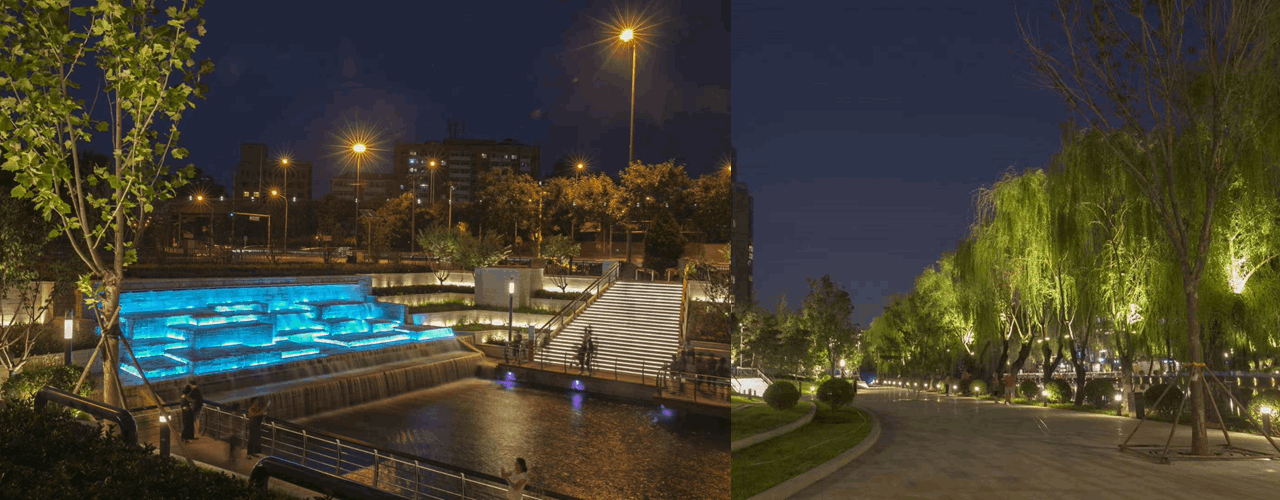
Seamless Integration of lights into Artworks, handrails, steps, walls...
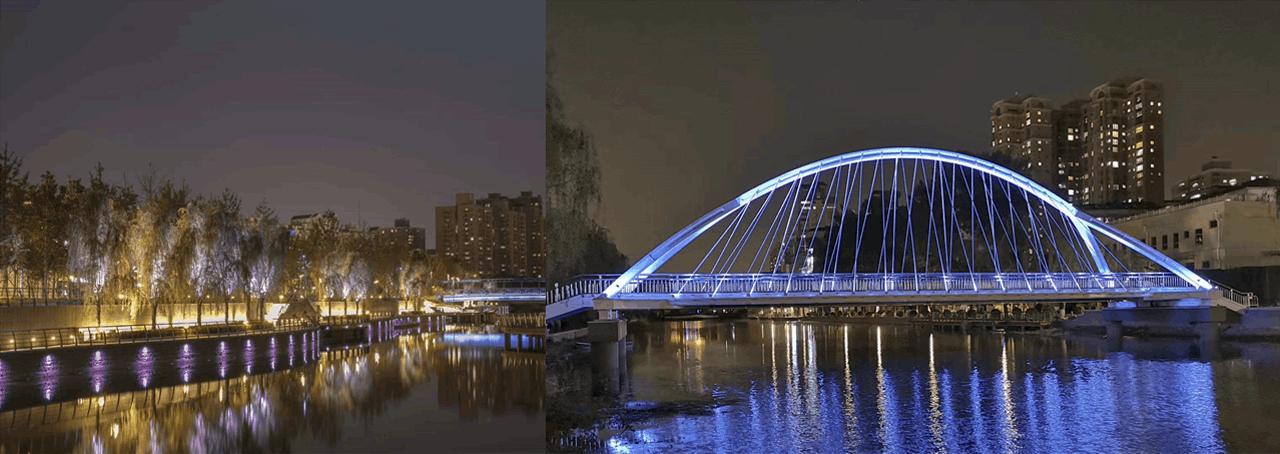
Banks and Bridges
We could have gone for a more grandiloquent lighting expression along the river. Instead we kept our focus on people and experience, making sure, place after place that we were offering the user, a safe and comfortable experience. This has been our priority. We made sure to reveal in the meantime the work of the landscape designers, sequences of corridors and open spaces, compositions of trees, linear handrails, layering of retaining walls … building up repetitions to generate order, continuity and unity in contrasted by striking ruptures at bridges and artworks. The result was that without any Grand Gesture, visible from afar, the lighting design preserved a strong feeling of comfortable and welcoming spaces from the beginning to the end of the River, that was immediately recognized and adopted by the Beijing people, flocking to the river as soon as it was open to have a walk, sit, read, talk, dance, run … as soon as the sun set and the summer weather gets colder and more enjoyable.
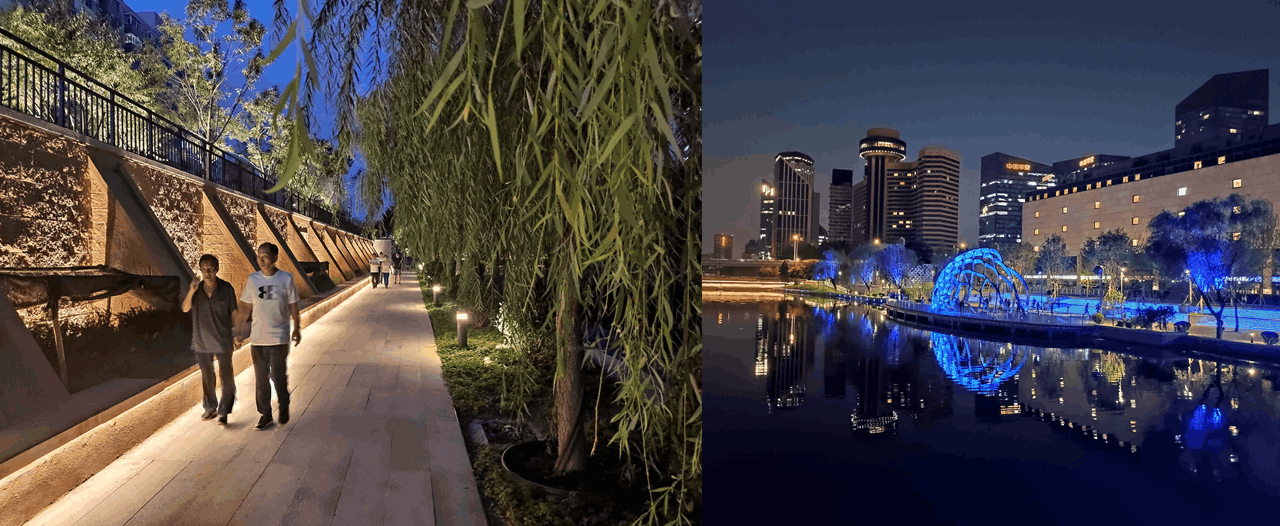
Usability and Art
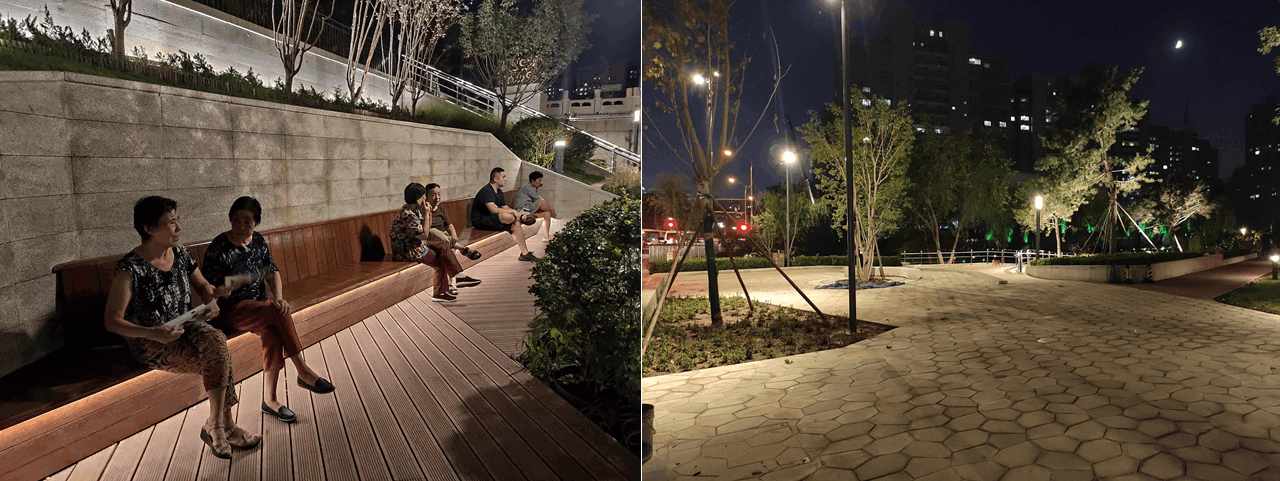
Ergonomy and Comfort

Community engagement made possible by proper illumination of squares and walkways
The Sustainability of this development has been key to our design approach. It has all been about maximizing the effects while minimizing the power consumption in the double interest of the client and of the environment preservation. The strongest tool at our disposal to achieve this was the design by itself. Avoiding over-illumination by having a clear idea of the functions and mood we wanted in every space allowed us to offer just the right amount of light. As well it pushed us to clearly choose what will be seen and what will not. At the design stage we certainly cut the power consumption in half. The choice of fixtures and their location was as well part of this optimization. The right choice of beams angles and color temperatures contributed significantly to a lower power needed. Finally, the design of an efficient control system allows us to grade and control the illumination through the phases of the night. From the crowded hours of the evening to the quiet end of the night.
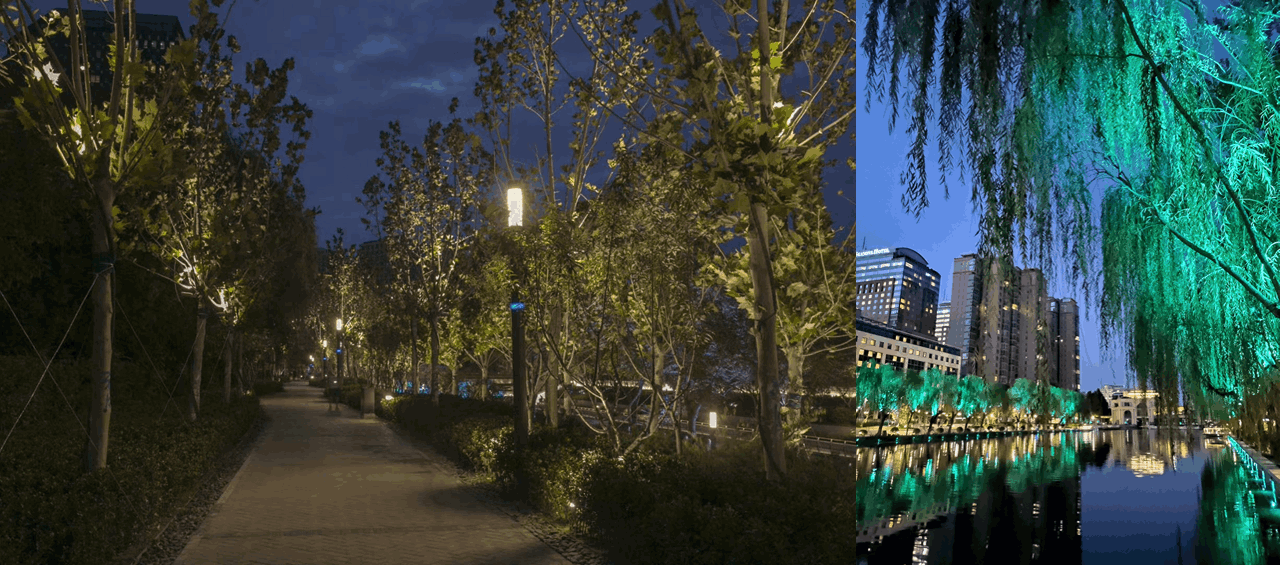
Unified Sustainable lighting system across varied landscaped ares
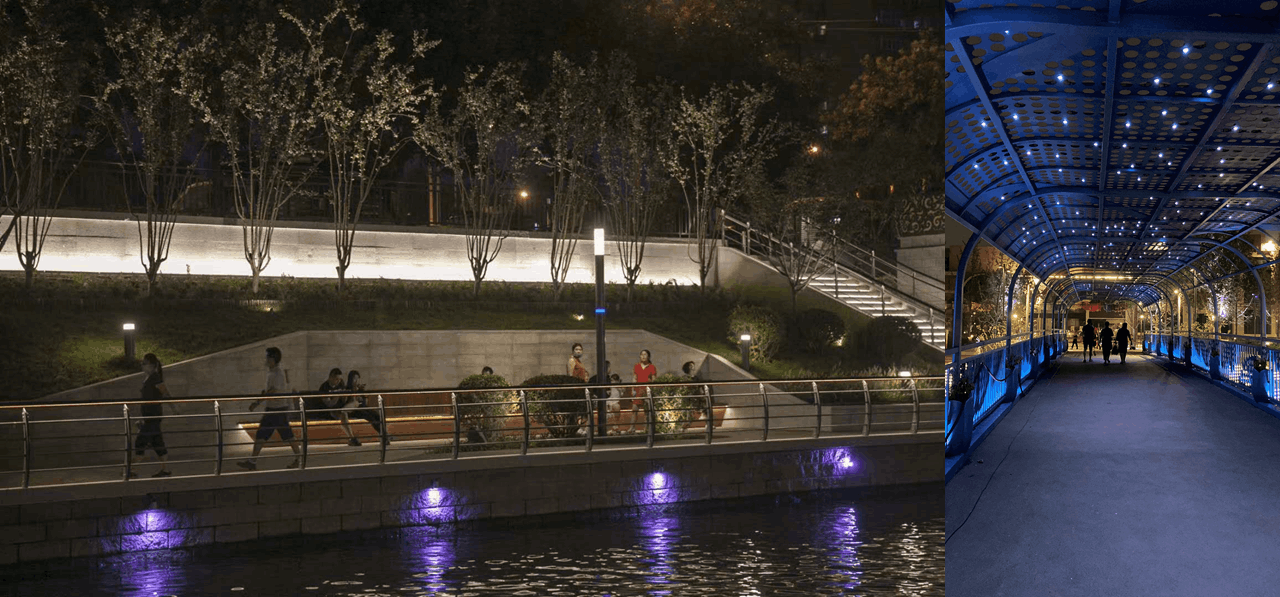
Multilevel combination of lights wrapped around human activities
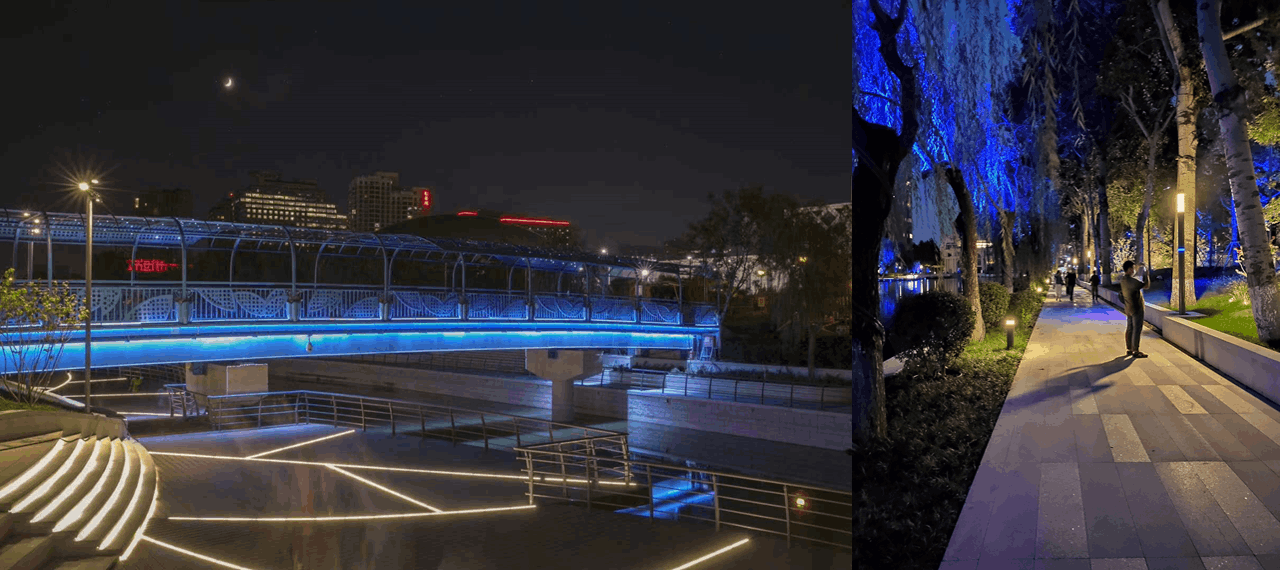
Graphic Areas and coordinated Color Schemes
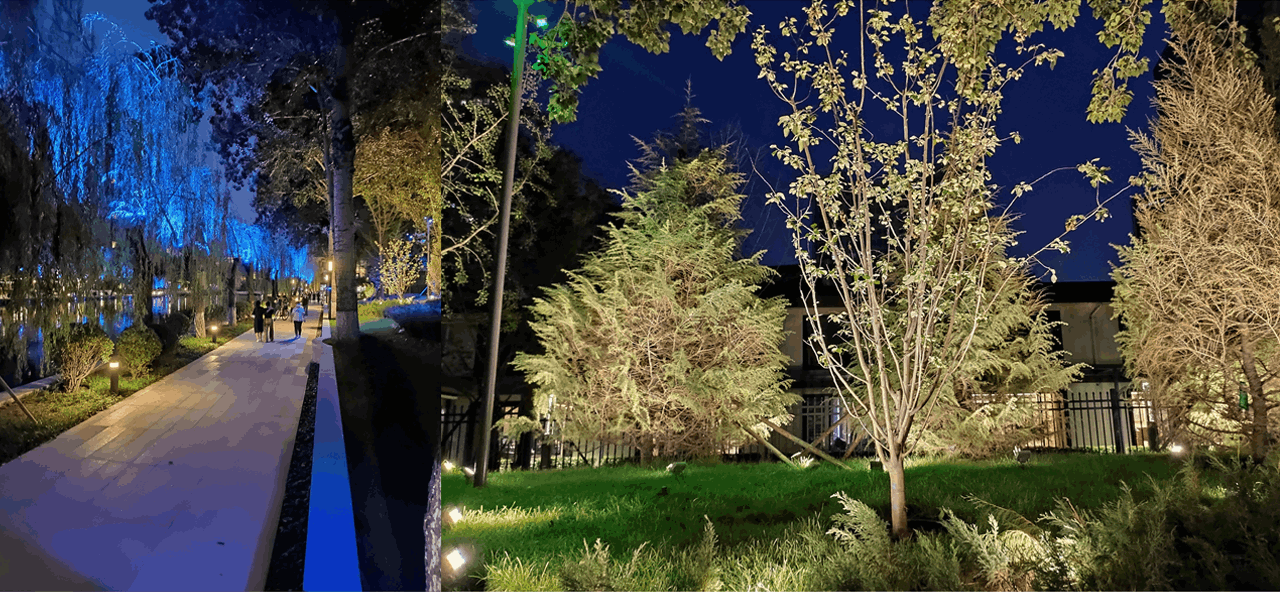
Color Pathways and Trees Illumination
Follow me
2022 - webdesign by Jean-Jacques Lanzo